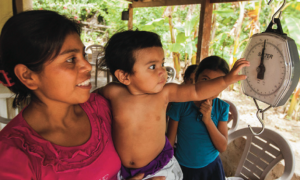
Lori Abbott, California News Service
March 2, 2015 (Oakland, California)-- One in four California children is living in poverty, but according to a new report from the Annie E. Casey Foundation, those numbers would be much higher without federal safety net programs and tax subsidies.
The report, Measuring Access to Opportunity in the United States, uses a new tool developed by the U.S. Census Bureau to measure the effects of poverty.
Jessica Mindnich, director of research at Children Now, says the Golden State's poverty rate improves when programs like the Earned Income Tax Credit and Supplemental Nutrition Assistance Program (SNAP) are factored in. SNAP is a newer name for the Food Stamps program.
"If you look at the percentage using this method without government assistance, children in poverty jumps to 40 percent. That's a huge number of kids, so it really shows the value of high-quality government programs," says Mindnich.
Mindnich says California's high child poverty rate means state officials should act quickly to support investments such as high-quality early childhood programs.
"We know that when you intervene early in a child's life, it makes a huge difference," she says. "Children that have access to high-quality early learning enter school ready to learn and are really set up to succeed in school."
According to Mindnich, this also helps working parents. Full-time infant and child care can cost up to 71 percent of a minimum wage earner's salary.
Laura Speer, associate director for policy reform and advocacy at the Casey Foundation, says better measurement tools are important to make improvements.
"Using the Supplemental Poverty Measure, we can really see the successes and the limitations of the safety net resources that we've put into place," says Speer. "We can also see these resources don't go far enough. We still see there are 13 million children below the poverty line."
The Casey Foundation estimates child poverty costs the country $500 billion annually in lost productivity and earnings, including costs related to health and crime.
In addition to high-quality early education, Speer says other examples of what can be done to ensure children have a better chance of success as adults include changing tax credit policies to help families keep more of what they earn, and linking up programs for parents to programs for children.







Recent comments